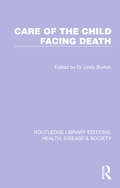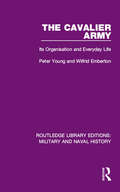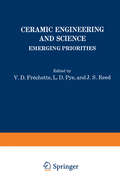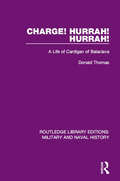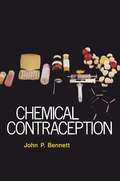- Table View
- List View
Capture Japan: Visual Culture and the Global Imagination from 1952 to the Present
by Marco BohrCapture Japan investigates the formation of visual tropes and how these have contributed to perceptions of Japan in the global imagination. The book proposes that images are not incidental in the formation of such perceptions, but central to notions about identity, history and memory. From a tentative western ally in 1952 to a 'soft power' superpower with a huge global influence in the 21st century, the book locates questions about Japan in the global imagination to the country's transforming geopolitical position. By adopting an interdisciplinary approach, with a multiplicity of perspectives from around the world, Capture Japan goes beyond binarisms to uncover how images can also produce discourses that challenge, subvert or even contradict each other. The word 'capture' in the title of the book recognises both the deeply problematic role that images have played in relation to colonialism, as well as the potential dominance that visual spectacles can wield in a contemporary context. Diverse essays from a wide range of perspectives investigate the institutional framework that has allowed certain types of images of Japan to be promoted, while others have been suppressed.In doing so, the book points to a vast network of images that have shaped the perception of Japan both from within and from outside, revealing how these images are inextricably linked to wider ideological, political, cultural or economic agendas.
Carbon Dioxide and Metabolic Regulations: Satellite Symposium of the XXV INTERNATIONAL CONGRESS OF PHYSIOLOGY, July 20 – 21 – 22, 1971 International Conference Monte-Carlo, Monaco (Topics in Environmental Physiology and Medicine)
by G. Nahas Karl Ernst SchaefferWallace O. Fenn (1893-1971) The proceedings of the satellite sym encompass the whole of physiology. His con posium of the XXV International Congress tributions over 50 years covered four main of Physiology on "C0 and Metabolic eras in the development of physiology: 2 Regulations" are dedicated to Wallace muscle, electrolyte, respiratory, and hyper Osgood Fenn. Dr. Fenn had agreed to be baric study. honorary conference chairman of this meet The study of muscle contraction started ing, but was unable to attend because of the in 1922 when Fenn became the first American to work in A. V. Hill's laboratory. Fenn illness from which he died two months later concluded this work by saying, " ... There on September 20, 1971. Wallace O. Fenn was born of an old is a fairly good quantitative relation between New England family in Lanesboro, Massa the heat production of muscles and the work chusetts on August 27, 1893. His father was which they perform; and a muscle which does dean of the Divinity School at Harvard ~ork liberates, ipso facto, an extra supply of University. It was at Harvard that Fenn energy which does not appear in an isometric received his A.B. (1914) and his M.S. (1916). contraction." (Fenn [1923]). A. V. Hill referred to this as the "Fenn effect," and so He then started his Ph.D. thesis there under the plant physiologist W. J. V. Osterhout, it has been known ever since.
Carcinoembryonic Antigens (Recent Results in Cancer Research #45)
by P. KoldovskyInterest in the general field of tumor immunology has grown phenomenally in recent years. The number of publications con tinues to grow in seemingly exponential fashion and the end is not yet in sight. Under these conditions, it is very difficult for any individual investigator to perceive the whole, or even the small portion within which his own efforts must necessarily be confined. Weare thus very fortunate when an investigator with long and wide experience in the field of tumor immunology takes the time to share his perspectives of a portion of that field. Dr. Koldovsky has been one of the pioneers in tumor immunology and he con tinues to contribute, especially in the area of CEA. In the present survey he has reviewed the status of CEA, setting forth not only the literature, but his own interpretation of that literature. For this endeavor, all workers in tumor immunology will be truely grateful.
Care of the Child Facing Death (Routledge Library Editions: Health, Disease and Society #9)
by Dr Lindy BurtonOriginally published in 1974, and written by paediatricians, social workers, nurses and a parent who cared for her dying child, this book is concerned with pinpointing the problems which exist for parents and those involved in the care of sick children, both in terms of accepting the facts of a child’s illness, and in loving supporting and giving them maximum enjoyment within the limits of their condition. The fears and anxieties of such children are examined – separation from parents, fear of pain, an increasing sense of difference and in some cases a very real appreciation of their situation. All these limit the child’s happiness, and ways of counteracting them are suggested. Similarly the distress of parents and of medical advisers is discussed.
Care of the Child Facing Death (Routledge Library Editions: Health, Disease and Society #9)
by Lindy BurtonOriginally published in 1974, and written by paediatricians, social workers, nurses and a parent who cared for her dying child, this book is concerned with pinpointing the problems which exist for parents and those involved in the care of sick children, both in terms of accepting the facts of a child’s illness, and in loving supporting and giving them maximum enjoyment within the limits of their condition. The fears and anxieties of such children are examined – separation from parents, fear of pain, an increasing sense of difference and in some cases a very real appreciation of their situation. All these limit the child’s happiness, and ways of counteracting them are suggested. Similarly the distress of parents and of medical advisers is discussed.
Category Seminar: Proceedings Sydney Category Theory Seminar 1972 /1973 (Lecture Notes in Mathematics #420)
by G. M. KellyThe Cavalier Army: Its Organisation and Everyday Life (Routledge Library Editions: Military and Naval History)
by Peter Young Wilfrid EmbertonThe English Civil War of 1642-6 was one of the most formative periods of British history. This book, originally published in 1974, was one of the first to explore in depth the situation of the common soldier – how he was trained, clothed, equipped , fed and paid; how he amused himself, was disciplined and cared for medically. As well as discussing aspects such as uniforms, pensions and the drill & establishment for artillery, cavalry, pike and musketeers, a typical Civil War battle is dissected into 7 phases, exploring the part played by both officers and men.
The Cavalier Army: Its Organisation and Everyday Life (Routledge Library Editions: Military and Naval History)
by Peter Young Wilfrid EmbertonThe English Civil War of 1642-6 was one of the most formative periods of British history. This book, originally published in 1974, was one of the first to explore in depth the situation of the common soldier – how he was trained, clothed, equipped , fed and paid; how he amused himself, was disciplined and cared for medically. As well as discussing aspects such as uniforms, pensions and the drill & establishment for artillery, cavalry, pike and musketeers, a typical Civil War battle is dissected into 7 phases, exploring the part played by both officers and men.
The Cell Surface: Immunological and Chemical Approaches (pdf) (Advances in Experimental Medicine and Biology #51)
by B. KahanThe Central Ethiopians, Amhara, Tigriňa and Related Peoples: North Eastern Africa Part IV
by William A. ShackRoutledge is proud to be re-issuing this landmark series in association with the International African Institute. The series, published between 1950 and 1977, brings together a wealth of previously un-co-ordinated material on the ethnic groupings and social conditions of African peoples. Concise, critical and (for its time) accurate, the Ethnographic Survey contains sections as follows: Physical Environment Linguistic Data Demography History & Traditions of Origin Nomenclature Grouping Cultural Features: Religion, Witchcraft, Birth, Initiation, Burial Social & Political Organization: Kinship, Marriage, Inheritance, Slavery, Land Tenure, Warfare & Justice Economy & Trade Domestic Architecture Each of the 50 volumes will be available to buy individually, and these are organized into regional sub-groups: East Central Africa, North-Eastern Africa, Southern Africa, West Central Africa, Western Africa, and Central Africa Belgian Congo. The volumes are supplemented with maps, available to view on routledge.com or available as a pdf from the publishers.
The Central Ethiopians, Amhara, Tigriňa and Related Peoples: North Eastern Africa Part IV
by William A. ShackRoutledge is proud to be re-issuing this landmark series in association with the International African Institute. The series, published between 1950 and 1977, brings together a wealth of previously un-co-ordinated material on the ethnic groupings and social conditions of African peoples. Concise, critical and (for its time) accurate, the Ethnographic Survey contains sections as follows: Physical Environment Linguistic Data Demography History & Traditions of Origin Nomenclature Grouping Cultural Features: Religion, Witchcraft, Birth, Initiation, Burial Social & Political Organization: Kinship, Marriage, Inheritance, Slavery, Land Tenure, Warfare & Justice Economy & Trade Domestic Architecture Each of the 50 volumes will be available to buy individually, and these are organized into regional sub-groups: East Central Africa, North-Eastern Africa, Southern Africa, West Central Africa, Western Africa, and Central Africa Belgian Congo. The volumes are supplemented with maps, available to view on routledge.com or available as a pdf from the publishers.
Central Nervous System: Studies on Metabolic Regulation and Function
by H. Herken E. GenazzaniThis book is based on the Symposium "Metabolic Regulation and Functional Activity in the Central Nervous System" which was held on September 16 and 17, 1972, at Saint Vincent (Aosta)/Italy, and was sponsored by the Accademia di Medicina di Torino with the scientific cooperation of the Istituto di Farmacologia, Universita di Torino, and the Pharmakologisches Institut der Freien Universitat Berlin. Its purpose was to give a greater number of scientists from different countries an opportunity to report their latest results under a heading concerning general relationships between metabolism and function. We quite deliberately refrained from pursuing the partly heterogenous subjects into details. Thus, the organizers hoped to be able to interest a greater circle of readers for the manifold subjects from various fields dealing with the investigation of metabolic processes in the central nervous system. The discussion remarks to the lectures could not be considered for printing. The Accademia di Medicina di Torino and all others concerned do not only thank Dr. R. Di Carlo and other members of the Istituto di Farmacologia, Universita di Torino, for the excellent work they performed in preparing this Symposium, but also the Amministrazione Regionale della Valle di Aosta and SIT A V di Saint-Vincent for their generous support and their kind hospitality which made the stay at Saint-Vincent most agreeable for all participants.
Ceramic Engineering and Science: Emerging Priorities (Materials Science Research #8)
by V. FrechetteThe Conference on Emerging Priorities in Ceramic Engineer ing and Science, held at Alfred University, November 4-6, 1974, was arranged to provide a basis for reassessment of professional goals, procedures and outlook. American priorities among comfort, safety, national prestige, security, convenience and environmental quality are significantly different from those of a dozen years ago. Economic factors have shifted, as exempli fied by scarcities in energy, mate rials and world food supplies. At the same time, demands for safer products, healthier work ing conditions and fairer rules of behavior are making them selves felt. Governmental, corporate and consumer interests are all involved and they are intricately inte rrelated. Higher education, for its part, must not only respond wisely to changing student attitude, itself a part of the national scene, but must gain perspective toward the present and toward changes of yet unknown nature which can be expected in the future. Persistent and pointed questions from engineers, managers, and students were an indication to us of wide-spread concern to understand the new pattern of priorities that is presently emerging. In response to this need, Conference papers were invited from distinguished engineers, scientists, and other specialists; their willingness to contribute from their expertise and their thinking is very much appreciated by the editors. The first four chapters of the volume deal with the larger scene and with the viewpoints of those concerned with it in behalf of government, corporations and the professions.
Cerebellar Cortex: Cytology and Organization
by S.L. Palay V. Chan-PalayThe origins of this book go back to the first electron microscopic studies of the central nervous system. The cerebellar cortex was from the first an object of close study in the electron microscope, repeating in modern cytology and neuroanatomy the role it had in the hands of RAMON y CAJAL at the end of the nineteenth century. The senior author vividly remembers a day early in 1953 when GEORGE PALADE, with whom he was then working, showed him an electron micrograph of a cerebellar glomerulus, saying "That is what the synapse should look like. " It is true that the tissue was swollen and the mitochondria were exploded, but all of the essentials of synaptic structure were visible. At that time small fragments of tissue, fixed by immersion in osmium tetroxide and embedded in methacrylate, were laboriously sectioned with glass knives without any predetermined orientation and then examined in the electron microscope. After much searching, favorably preserved areas' were studied at the cytological level in order to recognize the parts of neurons and characterize them. Such procedures, dependent upon random sections and uncontrollable selection by a highly erratic technique of preservation, precluded any systematic investigation of the organization of a particular nucleus or region of the central nervous system. It was difficult enough to distinguish neurons from the neuroglia.
The Cerebellum, Epilepsy, and Behavior
by Irving CooperIn cats anesthetized lightly with pentobarbital or alpha-chloralose, electrical stimulation of the paramedian lobule of cerebellum resulted in a change of EEG pattern. Prior to stimulation the pattern consisted of h igh-ampl itude slow waves with superimposed low-ampl itude fast activity. In addition, the EEGs of animals anesthetized with chloralose showed "chloralose spikes". Immediately following brief cerebellar stimulation the slow wave activity and spikes disappeared, leaving only low-voltage fast activity. The effect was most pronounced in the contralateral leads from the rostral portions of the cerebrum. Study of the parameters most effective in evoking this effect revealed that stimulation frequency, train duration, and probably pulse duration affected the duration of suppression in a sigmoid fashion, with inflection points at approximately 90 Hz, 2.5 sec, and 1 msec, respectively. Above threshold values, stimulation cur rent showed an approximately linear relationship to duration of EEG sup pression. The after-discharge resulting from focal electrical stimulation of the cerebral cortex could be shortened by electrical stimulation of the para median lobule. The effect was essentially the same when cerebellar stim ulation preceded, occurred during, or followed the cerebral cortical stim ulation. The great variability of the after-discharge resulting from cerebral cortical stimulation as well as the variability of the effects of cerebellar stimulation made it impractical to study systematically the parameters op timal for shorten ing after-discharge. Such a study wi II require use of an awake, preferably partially restrained animal with electrodes chronically implanted.
Characteristic Classes. (AM-76), Volume 76 (PDF)
by John Milnor James D. StasheffThe theory of characteristic classes provides a meeting ground for the various disciplines of differential topology, differential and algebraic geometry, cohomology, and fiber bundle theory. As such, it is a fundamental and an essential tool in the study of differentiable manifolds. In this volume, the authors provide a thorough introduction to characteristic classes, with detailed studies of Stiefel-Whitney classes, Chern classes, Pontrjagin classes, and the Euler class. Three appendices cover the basics of cohomology theory and the differential forms approach to characteristic classes, and provide an account of Bernoulli numbers. Based on lecture notes of John Milnor, which first appeared at Princeton University in 1957 and have been widely studied by graduate students of topology ever since, this published version has been completely revised and corrected.
Characterization of Solid Surfaces
by Philip F. Kane Graydon B. LarrabeeUntil comparatively recently, trace analysis techniques were in general directed toward the determination of impurities in bulk materials. Methods were developed for very high relative sensitivity, and the values determined were average values. Sampling procedures were devised which eliminated the so-called sampling error. However, in the last decade or so, a number of developments have shown that, for many purposes, the distribution of defects within a material can confer important new properties on the material. Perhaps the most striking example of this is given by semiconductors; a whole new industry has emerged in barely twenty years based entirely on the controlled distribu tion of defects within what a few years before would have been regarded as a pure, homogeneous crystal. Other examples exist in biochemistry, metallurgy, polyiners and, of course, catalysis. In addition to this of the importance of distribution, there has also been a recognition growing awareness that physical defects are as important as chemical defects. (We are, of course, using the word defect to imply some dis continuity in the material, and not in any derogatory sense. ) This broadening of the field of interest led the Materials Advisory Board( I} to recommend a new definition for the discipline, "Materials Character ization," to encompass this wider concept of the determination of the structure and composition of materials. In characterizing a material, perhaps the most important special area of interest is the surface.
Charge! Hurrah! Hurrah!: A Life of Cardigan of Balaclava (Routledge Library Editions: Military and Naval History)
by Donald ThomasFor James Thomas Brudenell, 7th Earl of Cardigan, leading the Light Brigade at Balaclava was but one incident in a life of sensation and notoriety. Donald Thomas’s biography, originally published in 1977, and based on new material when originally published, shows this most controversial Victorian against a panorama of regimental intrigue and aristocratic luxury. Dismissed from the army for ‘revolting’ conduct, Cardigan bought the command of the 11th Hussars (the ‘Cherry Bums’) for £40,000 a few years later. Regimental rivalries led to the ‘Black Bottle’ scandal of 1840 and to a duel in which he shot a brother officer. Charged with attempted murder, Cardigan was the only Victorian peer to be tried by the House of Lords. Nonetheless, his seductions of other men’s wives rivalled his regimental misdemeanours in press reports. He was jeered int he streets, hissed at the theatre and burnt in effigy. It took the glory and the folly of Balaclava to turn ‘this plague-spot of the British army’ into ‘the most popular soldier in England’. Greeted everywhere by cheering crowds, their new hero fought duels and libel actions against those who denied his bravery before the Russian guns. For all his misbehaviour, Cardigan remains warm-blooded, generous, impulsive and courageous, as well as obstinate, proud and sometimes ridiculous. Hated by numerous men, and adored by many women, his elopement with the beautiful Adeline Horsey de Horsey was a triumph of his old age.
Charge! Hurrah! Hurrah!: A Life of Cardigan of Balaclava (Routledge Library Editions: Military and Naval History)
by Donald ThomasFor James Thomas Brudenell, 7th Earl of Cardigan, leading the Light Brigade at Balaclava was but one incident in a life of sensation and notoriety. Donald Thomas’s biography, originally published in 1977, and based on new material when originally published, shows this most controversial Victorian against a panorama of regimental intrigue and aristocratic luxury. Dismissed from the army for ‘revolting’ conduct, Cardigan bought the command of the 11th Hussars (the ‘Cherry Bums’) for £40,000 a few years later. Regimental rivalries led to the ‘Black Bottle’ scandal of 1840 and to a duel in which he shot a brother officer. Charged with attempted murder, Cardigan was the only Victorian peer to be tried by the House of Lords. Nonetheless, his seductions of other men’s wives rivalled his regimental misdemeanours in press reports. He was jeered int he streets, hissed at the theatre and burnt in effigy. It took the glory and the folly of Balaclava to turn ‘this plague-spot of the British army’ into ‘the most popular soldier in England’. Greeted everywhere by cheering crowds, their new hero fought duels and libel actions against those who denied his bravery before the Russian guns. For all his misbehaviour, Cardigan remains warm-blooded, generous, impulsive and courageous, as well as obstinate, proud and sometimes ridiculous. Hated by numerous men, and adored by many women, his elopement with the beautiful Adeline Horsey de Horsey was a triumph of his old age.
Chemical Kinetics of Homogeneous Systems
by John T. Edward R. SchaalChemical kinetics aims to explain the factors governing the change with time of chemical systems. The results enable one to define optimum technico-economic condi tions (such as the choice of batch or continuous processes; of concentration, temperature, and pressure; of whether to use a catalyst) for the preparation of products, so that kinetics is intimately bound up with many processes of chemical industry (production, explosions, combustion, propulsion in air and in space). On another level, kinetic studies are indispensable for understanding reaction mechanisms, which implies a de tailed knowledge of the different chemical intermediates (possibly very transitory) of a chemical reaction. But in practice it is rarely possible to work with microscopic quantities of reagents and, with the exception of crossed molecular beams, all methods give only statistical results concerning a large number of molecules. Because of this restriction, it has not always been possible to establish conclusively a reaction mechanism, even for reactions ap parently simple. Numerous attempts have been made to calculate rate constants from the physical properties of the participating molecules; but the introduction of the 'time' factor into calculations of the distribution of energies of chemical processes makes this very difficult, so that the elucidation of mechanisms still depends almost entirely on experi mental studies. However, several theories have been elab orated which, in giving a more and more precise picture of the reaction process, have proved very fruitful, and have become indispensable in designing experiments.
Chemical Spectroscopy and Photochemistry in the Vacuum-Ultraviolet: Proceedings of the Advanced Study Institute, held under the Auspices of NATO and the Royal Society of Canada, August 5–17, 1973, Valmorin, Quebec, Canada (Nato Science Series C: #8)
by Camille Sandorfy Pierre Ausloos M. B. RobinIt is probably safe to predict that the future of chemistry is linked to the excited states of molecules and to other short lived species, ions and free radicals. Molecules have only one ground state but many excited states. However large the scope of normal, ground state chemistry might be, above and beyond it lies the world of excited states, each one having its own chemis try. The electronic transitions leading to the excited states, either discrete of continuous, are examined in molecular elec tronic spectroscopy. Electronic spectroscopy is the queen of all spectroscopies: for if we have the resolution we have everything. Vnfortunately, the chemist who is interested in the structure and reactions of larger molecules must often renounce all that infor mation. The spectra are complex and often diffuse; resolution does not always help. To understand such spectra he must look at whole families of molecules; to some extent structural analogies help. Let us call this chemical spectroscopy and handle it with care. In order to understand the properties of molecules we also need theory. We know that molecular problems are, in principle, soluble by the methods of quantum mechanics. Present time quan tum chemistry is able to provide a nearly accurate description of not too large molecules in their ground states. It is probablY again safe to predict that the future of quantum chemistry is connected with molecular excited states or, generally spoken, the accurate handling of the open-shell problem.
Chemically Induced Dynamic Nuclear and Electron Polarizations-CIDNP and CIDEP (NMR Basic Principles and Progress #8)
by C. Richard P. GrangerAnomalous electron-spin state populations in the Electron Paramagnetic Re sonance (EPR) spectra of radicals formed during radio lysis experiments were observed in 1963 by FESSENDEN and SCHULER [170a]. This phenomenon did not receive much attention at the time. In 1967, BARGON, FISCHER, and JOHNSEN [5] and independently WARD and LAWLER [7,8] reported a similar phenomenon for Nuclear Magnetic Resonance (NMR) spectra taken during radical reactions: emission or enhanced absorption, or both. The earliest attempts to explain this new NMR phenomenon treated these effects in a way similar to that of Dynamic Nuclear Polarization (DNP) or the Overhauser effect. Although the polarization has a completely different origin, DNP gave its name to this effect: Chemically Induced Dynamic Nuclear Polariza tion (CIDNP). [The name Chemically Induced Dynamic Electron Polarization (CIDEP) was introduced later by analogy with CIDNP]. After the initial publica tions, all the new data demonstrated that the first theory could not be correct. In 1969, a new theory was proposed by CLOSS [18] and independently by KAPTEIN and OOSTERHOFF [23] and called the radical-pair theory. This mechanism was proposed to account for the observations of polarization in both NMR and EPR. The radical-pair theory is based on weak interactions in a pair of radicals: the strength of interaction between the electronic states of the radicals depends in particular on the nuclear-spin states.



